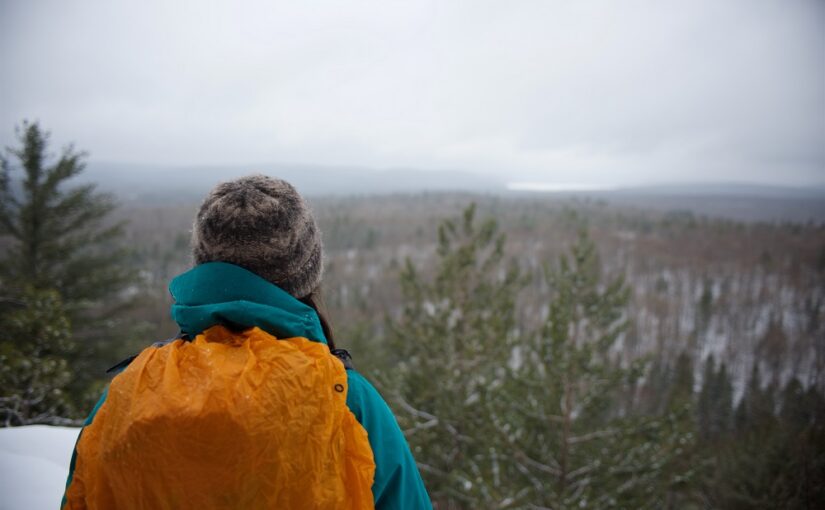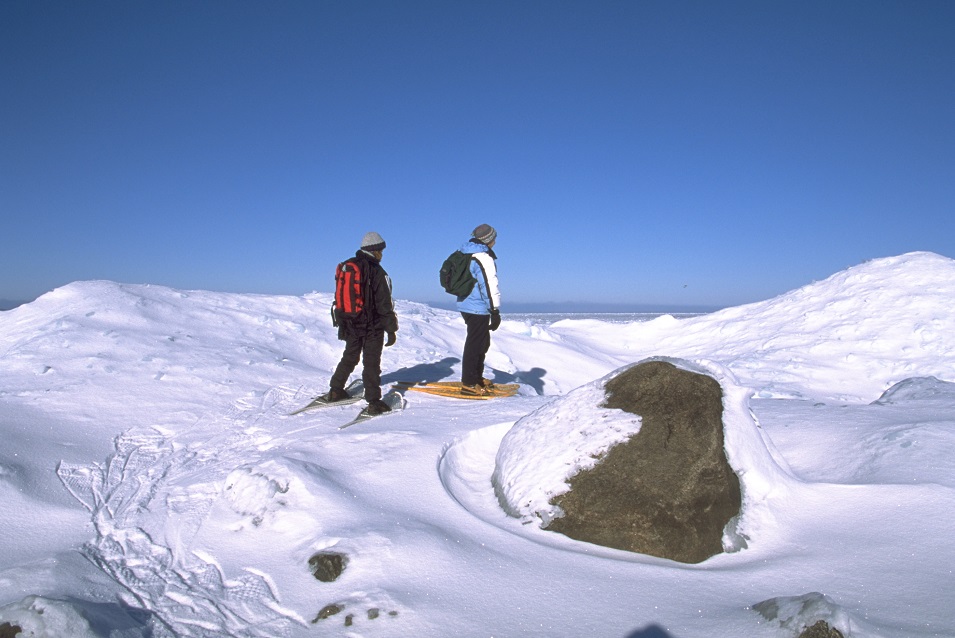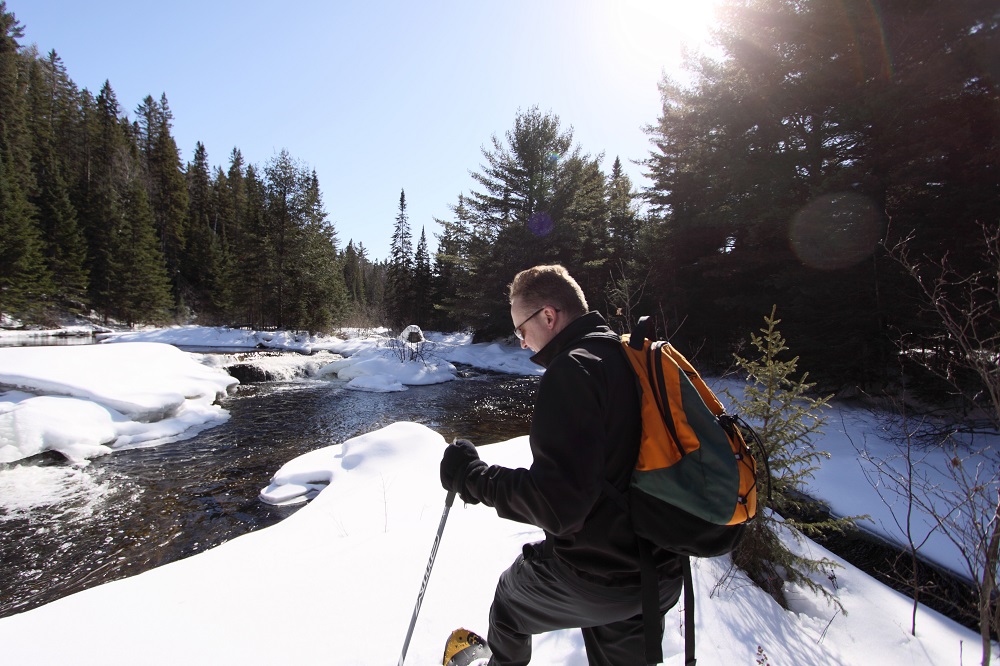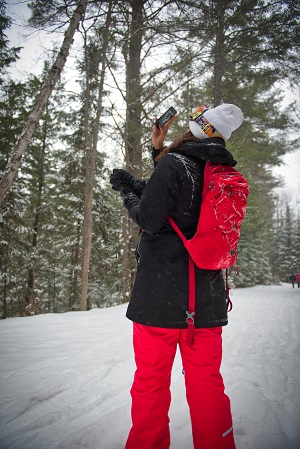Trail guide and cellphone and water in bottles,
Flashlight just in case your hike is a dawdle,
High energy snacks secured with drawstrings,
These are a few of our essential things… (can’t you just hear Maria von Trapp’s voice?)
A walk through a pine tree forest in crunchy snow can be dreamy, however your trip through a winter wonderland can go south quickly if you’re missing important items.
Being prepared with a few essentials in your bag will help keep you safe on your adventure. Here are six items that should always be in your day pack on a winter hike:
1. Something to light the way
Days are shorter in winter, meaning it gets dark earlier.
Always plan to be off the trails before dusk, but be prepared in case the trail takes longer than expected or an injury slows you down.
A headlamp or flashlight lets you navigate off the trail safely. Getting caught on the trail after dark is a major safety hazard and a common rescue situation in the winter season.
2. Water
Always bring plenty of water.
When it’s hot out, people are more likely to remember water for their hike, but you can just as easily become dehydrated on a winter hike.
Bottles with straw systems can be vulnerable to freezing if the temperatures are cold enough. Instead, try insulated bottles to prevent your water from becoming too icy (or add a thermos of something hot to warm you up mid-trail!).
3. High-energy snacks
Hiking in winter often requires a little extra fuel.
Walking in snow creates more resistance, and the cold temperatures can burn energy quicker. That’s why it’s a good idea to bring extra high-energy snacks in your pack.
Trail mix, jerky, and energy bars/balls are great options to keep you fueled on the go.
4. Cell or satellite phone
Before you head out on the trail, it’s a good idea to let a friend or family member know where you’re headed.
It’s also a good idea to bring a phone or satellite phone just in case you run into trouble along the way.
Service can vary from park to park, but most carriers post coverage maps on their website so you can check before you go. Other types of devices, like satellite phones, are more reliable in low- to no-service areas.
Remember that your phone may not function well if it gets too cold, so keep it somewhere insulated or near your body to keep it warm.
5. A trail guide and/or map
If a trail guide is available, bring a copy with you on your hike.
Some parks don’t have trail guides available in winter, but may post maps at the trail head. If you have a phone, you can snap a pic, so you have a digital copy to take with you (but a physical copy if always a good idea in case your phone can’t hack the cold).
Some parks also have PDF versions of their hiking trails on their park page.
6. Extra layers
Pack a few extra layers in case you get cold or wet. Extra gloves and socks are always a good idea!
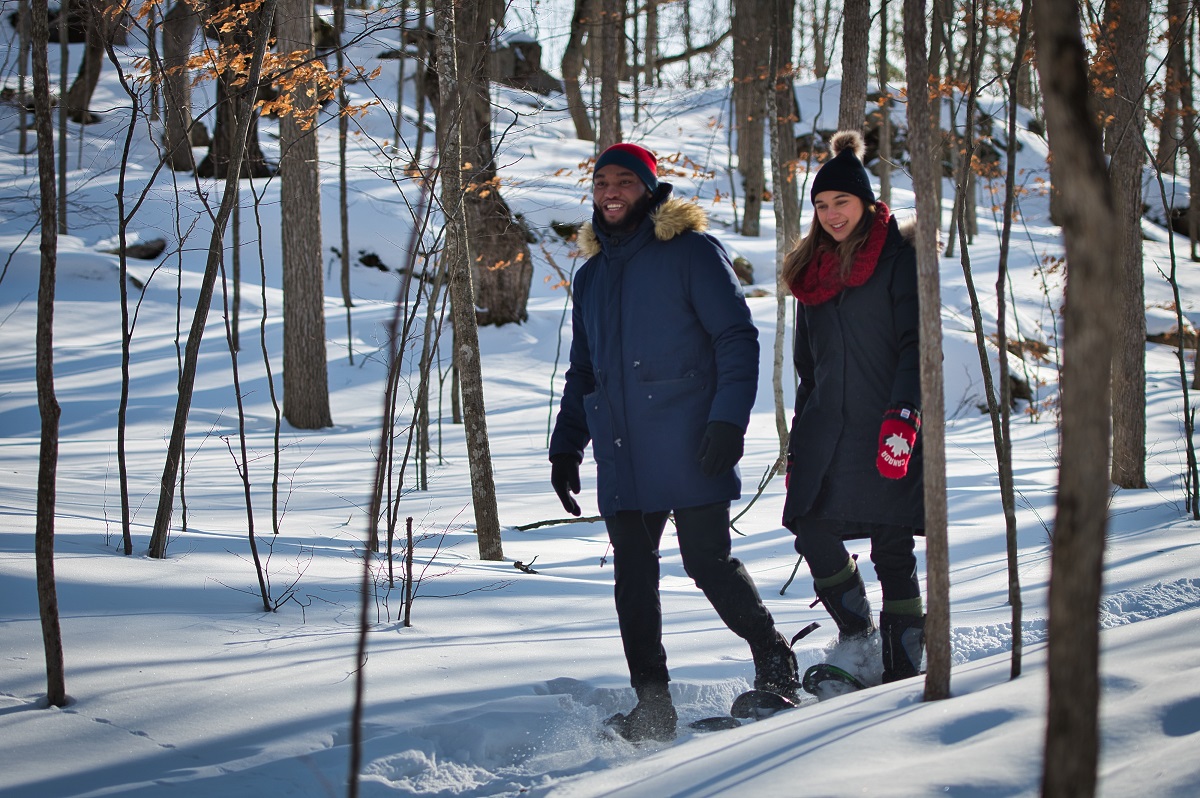
A few other considerations:
- a waterproof cover for your pack can help protect what’s in your bag if it’s snowing during your hike
- throwing a few packs of hand warmers in your bag can really make a difference. You can even use these packs in your boots!
- matches or a fire starter are great for your safety kit, especially if you are heading out on a longer hike
Have a fun and safe time on the trails!
Remember: if you don’t have a lot of experience with winter hiking, it’s a good idea to start off with a shorter trail (2 km or less).
Trails take longer to complete in the winter, and you will exert more energy. Start with a shorter trail and work your way up.
For more information about your local provincial park, check our winter webpage!
